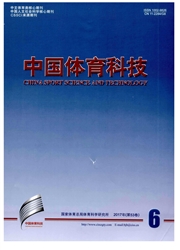

 中文摘要:
中文摘要:
目的:研究儿童青少年游泳运动员高原训练心脏功能低氧应答反应和适应性变化规律,并进行AMS评估和HAPE早期症状问诊,结合分析高原乳酸阈强度训练对运动员心脏功能以及血清cTnI、NT-proBNP含量的影响,探讨儿童青少年游泳运动员基础训练阶段高原训练的可行性。方法:以11周岁基础训练阶段的低年龄组游泳运动员和14周岁高年龄组游泳运动员各9名为研究对象,在青海多巴进行2周的高原训练。于高原第1天进行AMS评估和HAPE早期症状问诊。高原前、高原第1、14天和高原后第7天采用多普勒心超评估心脏功能。高原第11天评估乳酸阈强度训练对运动员心脏功能以及血清cTnI、NT-proBNP含量的影响。结果:1)高原第1天低年龄组运动员2人(22.2%)出现轻度AMS,所有运动员均未出现HAPE临床症状。2)高原前,两组运动员HR、PASP、CO、EF、FS和RV-Tei无显著差异,低年龄组EDV、SV显著低于高年龄组(EDV:86.73±12.23 vs.91.11±17.54,P〈0.05;SV:56.34±9.89 vs.61.74±13.77,P〈0.05)。高原第1天,运动员HR、PASP显著升高,低年龄组显著高于高年龄组(HR:82.76±14.24 vs.75.28±14.87,P〈0.05;PASP:20.61±4.79 vs.19.41±4.69,P〈0.05);SV显著减少而CO显著增加,低年龄组显著低于高年龄组(CO:4.41±1.16 vs.4.91±1.47,P〈0.05;SV:47.89±12.11 vs.57.81±9.17,P〈0.05);EF、FS显著增加,组间比较无显著差异。高原第14天,运动员CO、PASP恢复高原前水平,HR、EF和FS显著高于高原前,各指标组间比较无显著差异;SV低于高原前水平,低年龄组显著低于高年龄组(51.84±10.93 vs.58.5±9.39,P〈0.05)。高原后第7天,运动员HR、SV恢复高原前水平,EF、FS持续高于高原前,各指标组间比较无显著差异。高原前、后两组运动员RV-Tei均未发生显著变化。3)训练前安静状态,两组运动员HR、PASP、CO、EF、E/A、RV-Tei和血液指标无显著差异。训练后即刻,运动员HR?
 英文摘要:
英文摘要:
Objective: To investigate the response and adaptation of children swimmers' cardiac function about altitude training and the changes of cardiac function after intensity training at pla- teau. Methods: Eighteenth young swimmers were divided into two groups (Child: 1l years old. Adolescent: 14 years old) and two-weeks altitude training was carried out in Duoba (altitude: 2388 meters) .The presence of AMS and the symptoms of HAPE was assessed clinically in the 1 st day of plateau. Cardiac function was assessed by Color Doppler ultrasonography before and after altitude training and in the 1 st and 14th day of plateau. The effects of altitude training at lactate threshold in- tensity on cardiac function were evaluated in the 1 lth day of plateau. Result: 1 ) 2 athletes in children group were diagnosed with mild AMS. All athletes did not show any symptoms of HAPE. 2 ) There was no significant difference between two groups in cardiac function before plateau except that the EDV and SV of child were significant lower than adolescent (EDV: 86.73 ±12.23 vs. 91.11 ± 17.54, P〈 0.05; SV: 56.34±9.89 vs. 61.74± 13.77, P〈 0.05). After entering the plateau, the HR, CO, EF, FS and PASP of athletes increased significantly, but the SV decreased significantly. The HR and PASP of child was significantly higher than adolescent (HR: 82.76±14.24 vs. 75.28±14.87, P〈 0.05; PASP: 20.61 ±4.79 vs. 19.41 ±4.69, P〈 0.05), but the CO and SV was significantly lower than adolescent (CO: 4.41±1.16 vs. 4.91 ± 1.47, P〈 0.05; SV: 47.89±12.11 vs. 57.81 ±9.17, P 〈 0.05 ). The CO and PASP in two groups were restored to the pre-plateau level on the 14th day of plateau, but EF and FS increased continuously to the 7th day of post-plateau. The RV-Tei index did not change during altitude training. 3) There were no significant difference between two groups in cardiac function and the serum indexes before plateau. The CO and PASP increased significantly and EF and E/A decreased significa
 同期刊论文项目
同期刊论文项目
 同项目期刊论文
同项目期刊论文
 期刊信息
期刊信息
